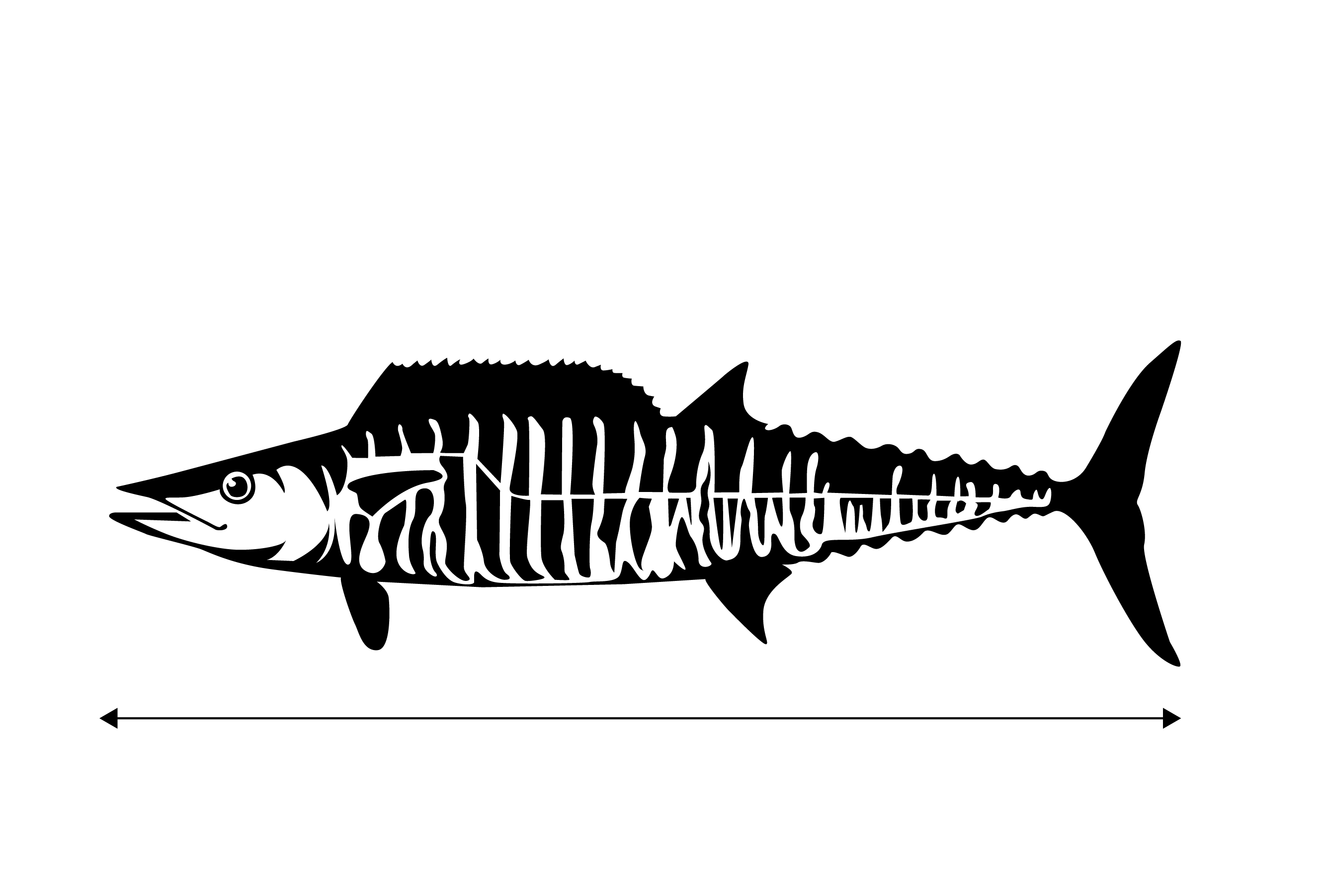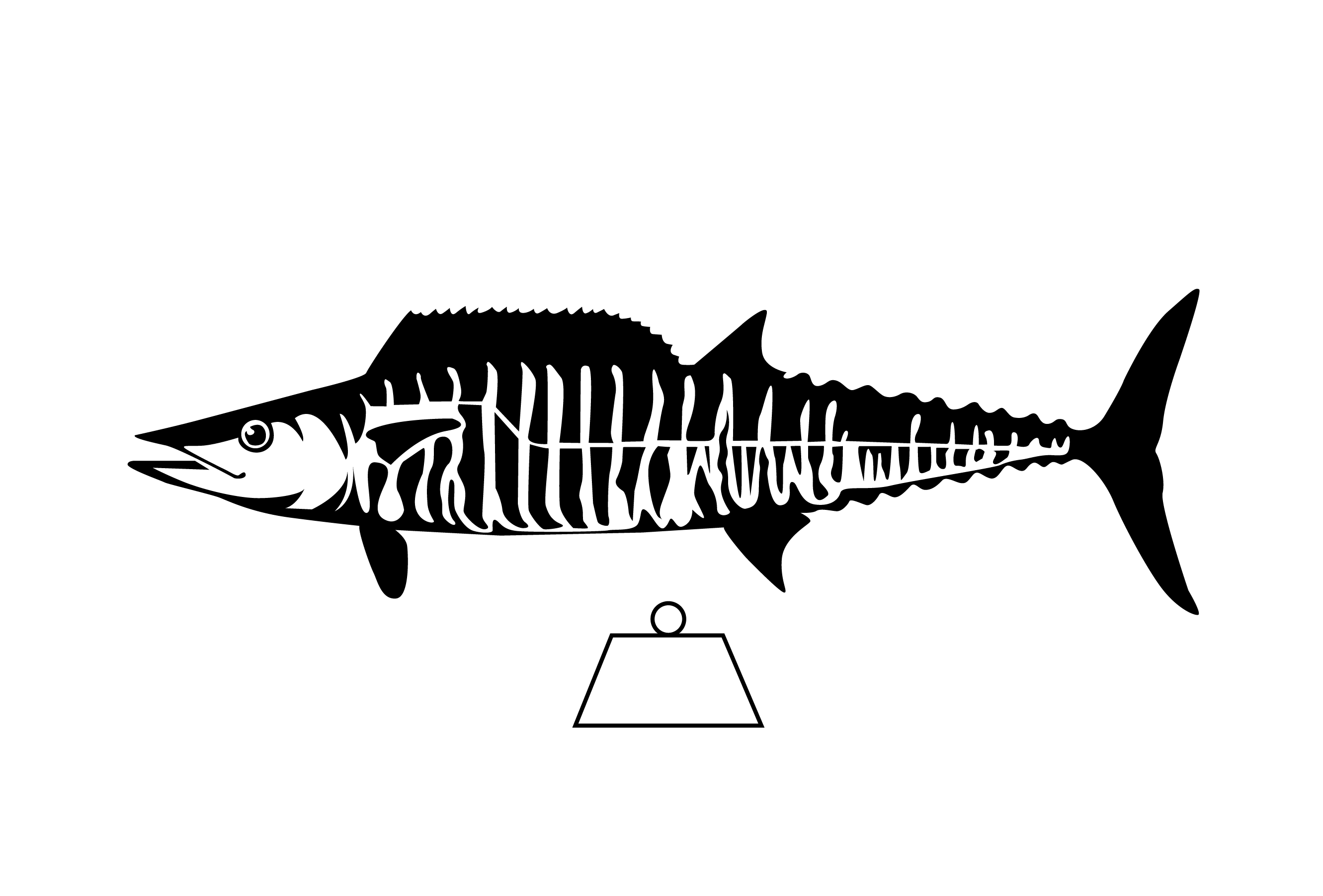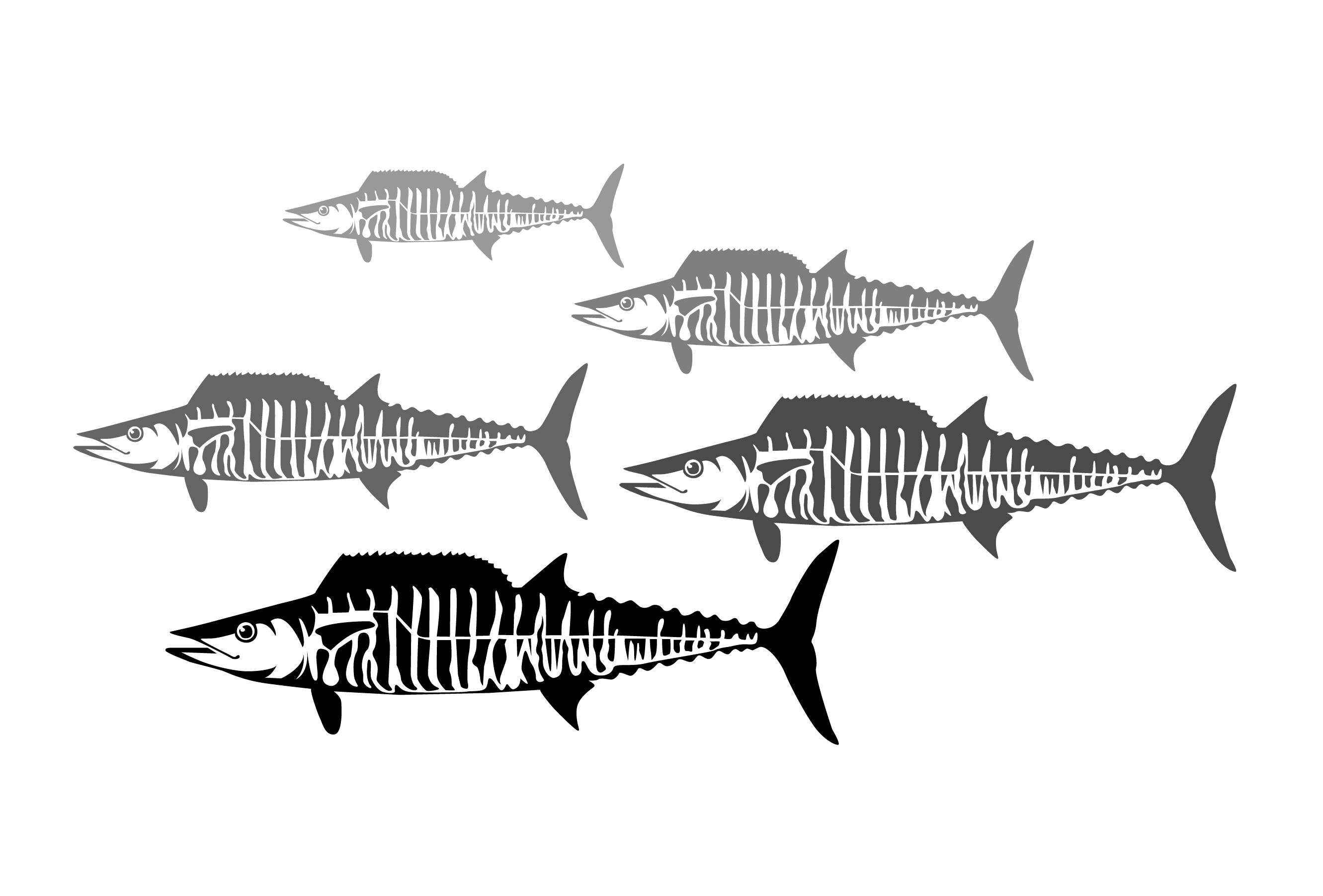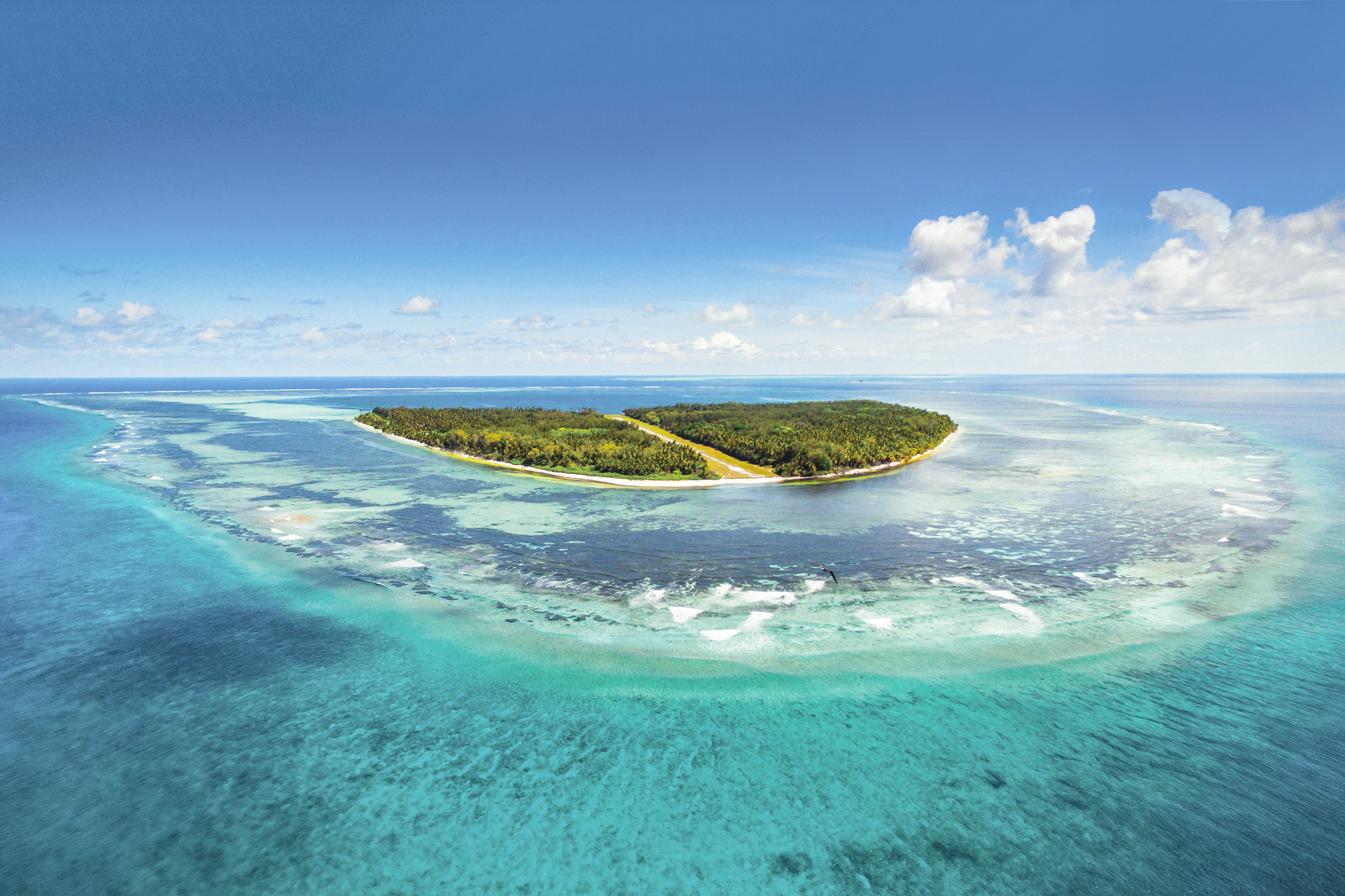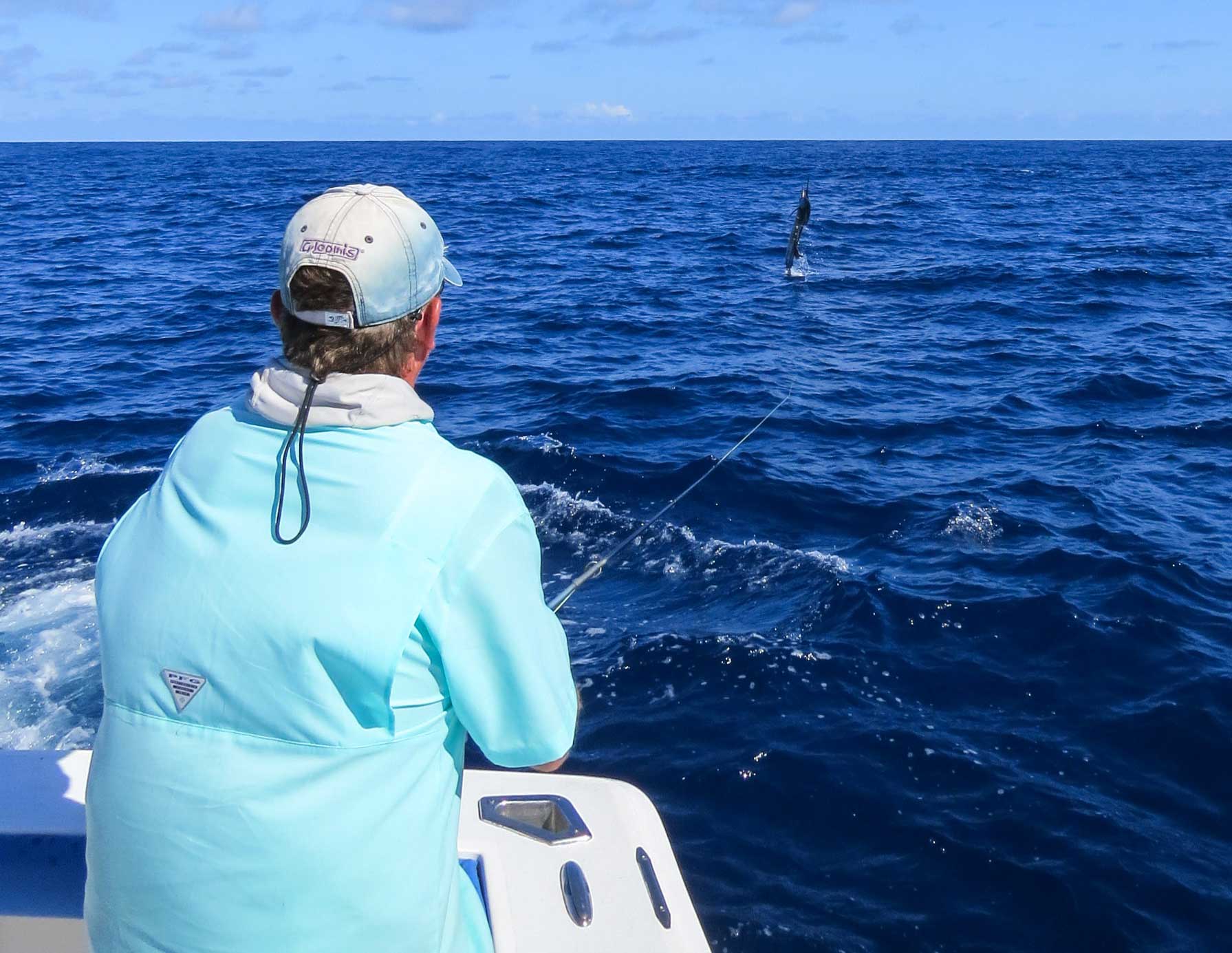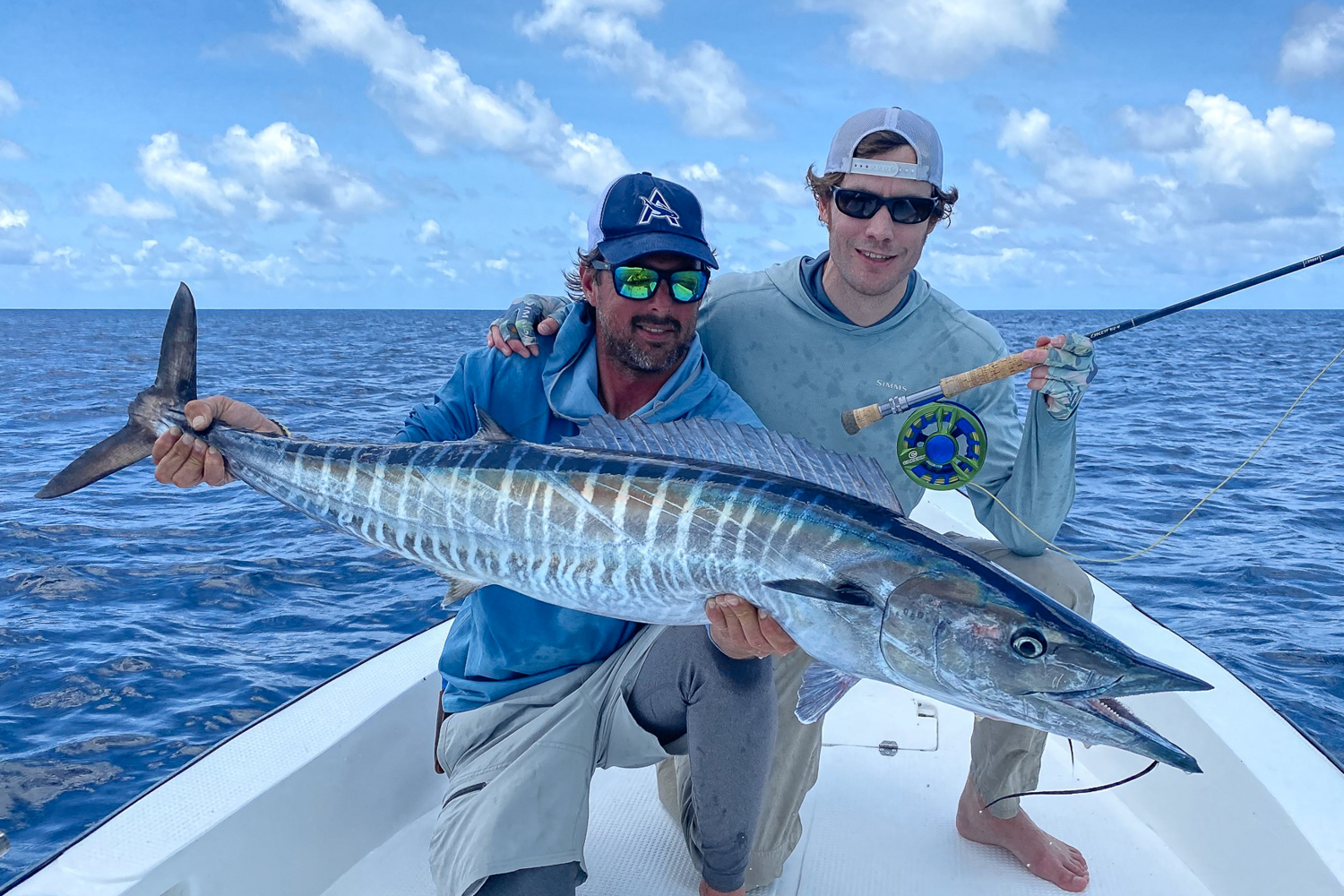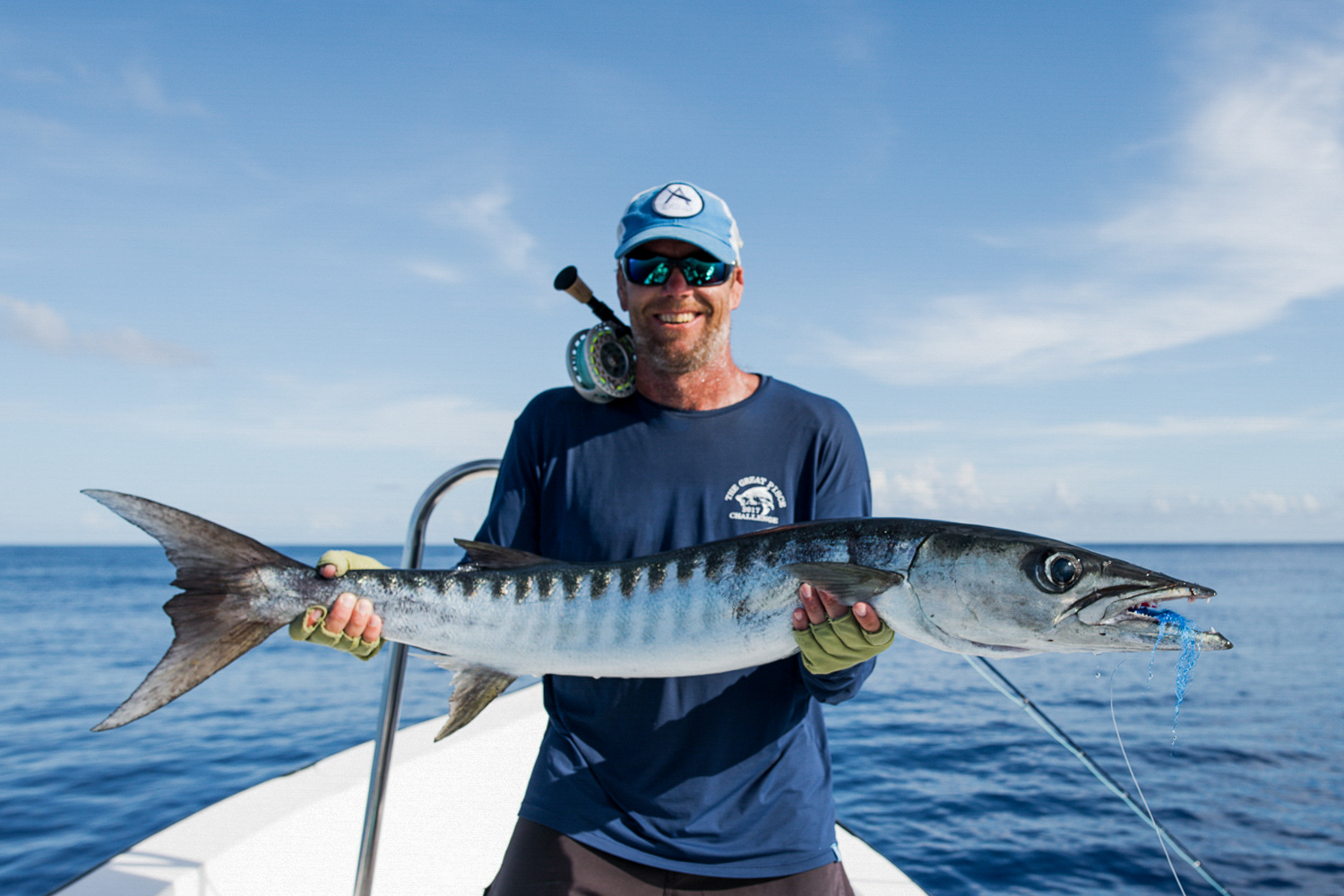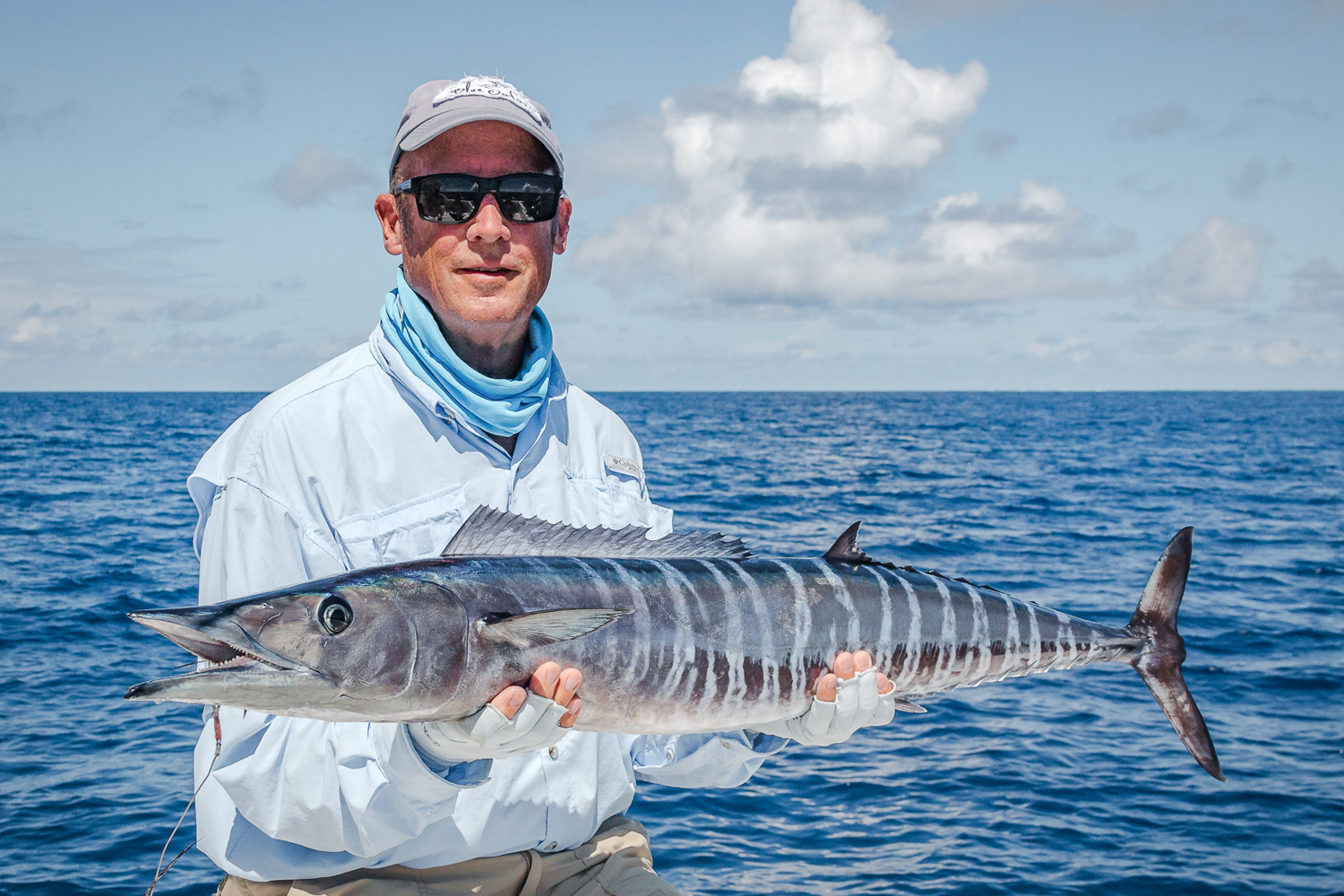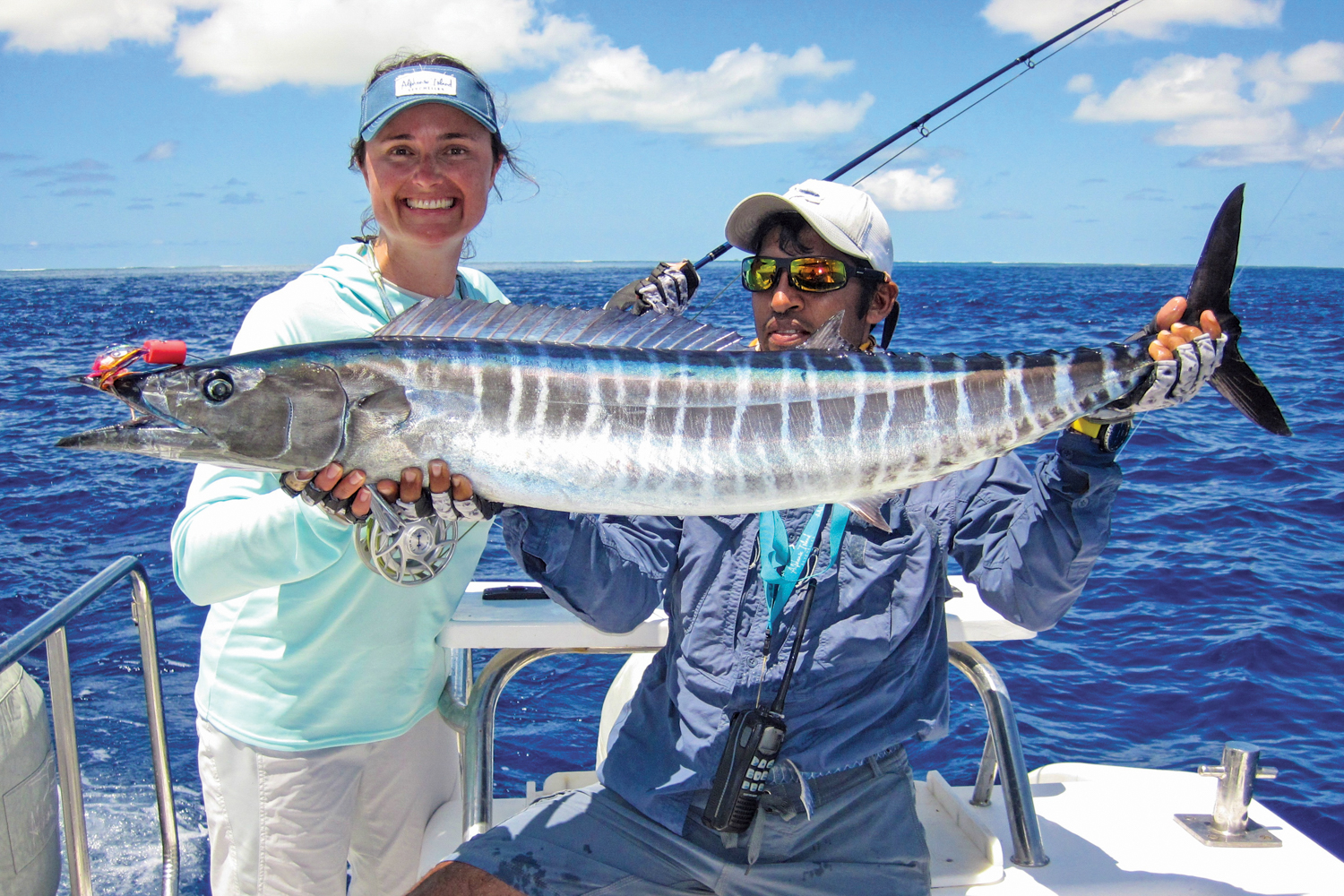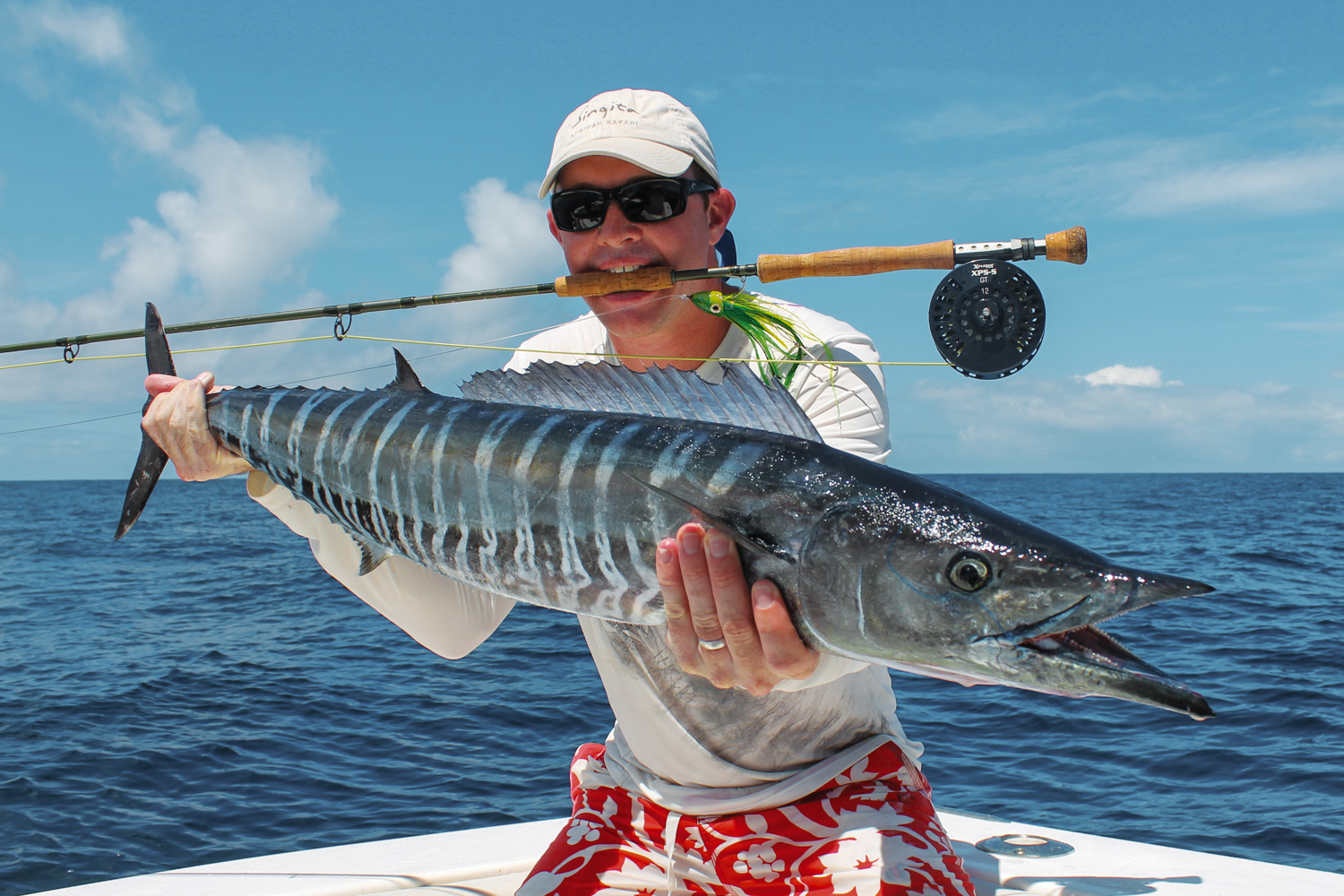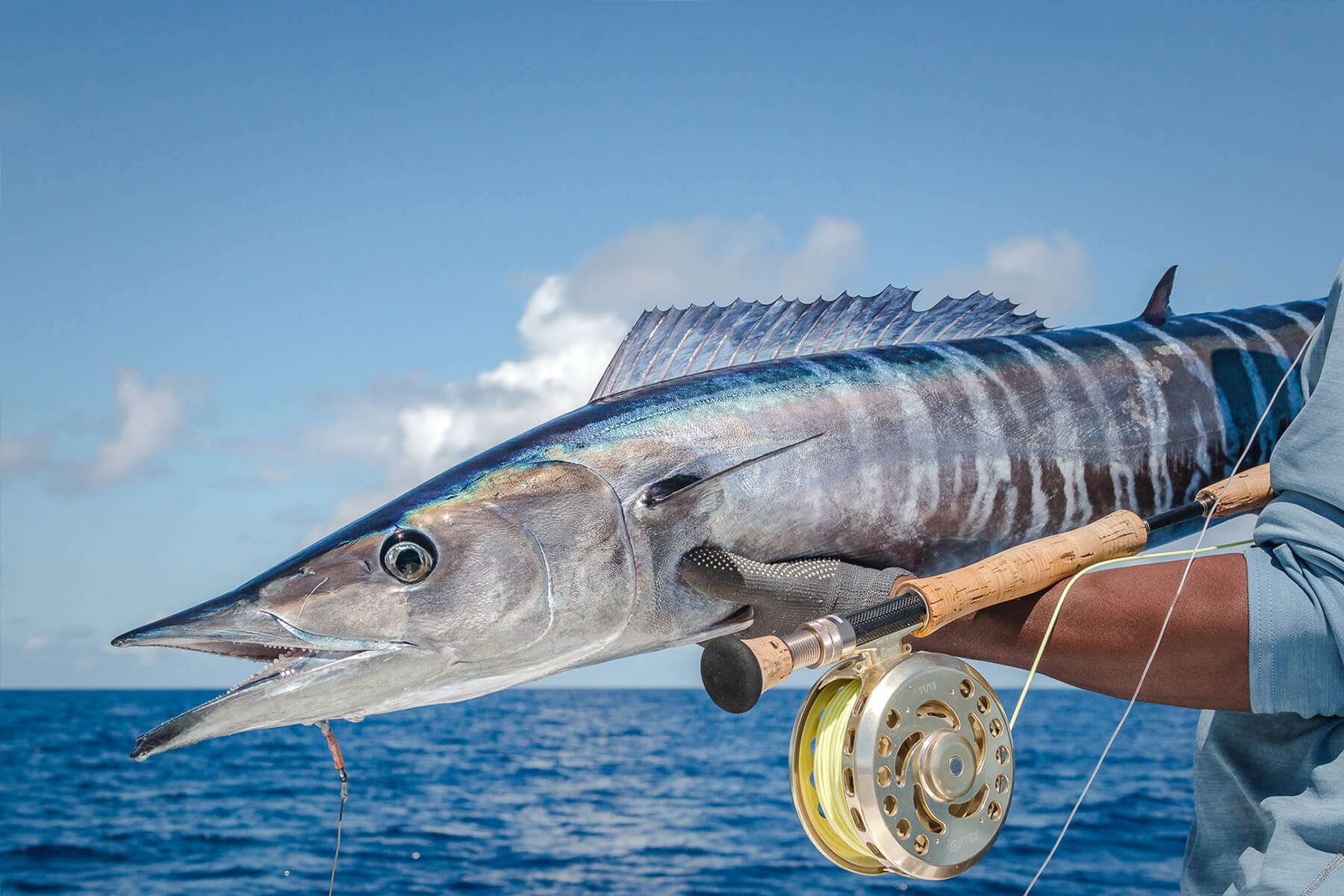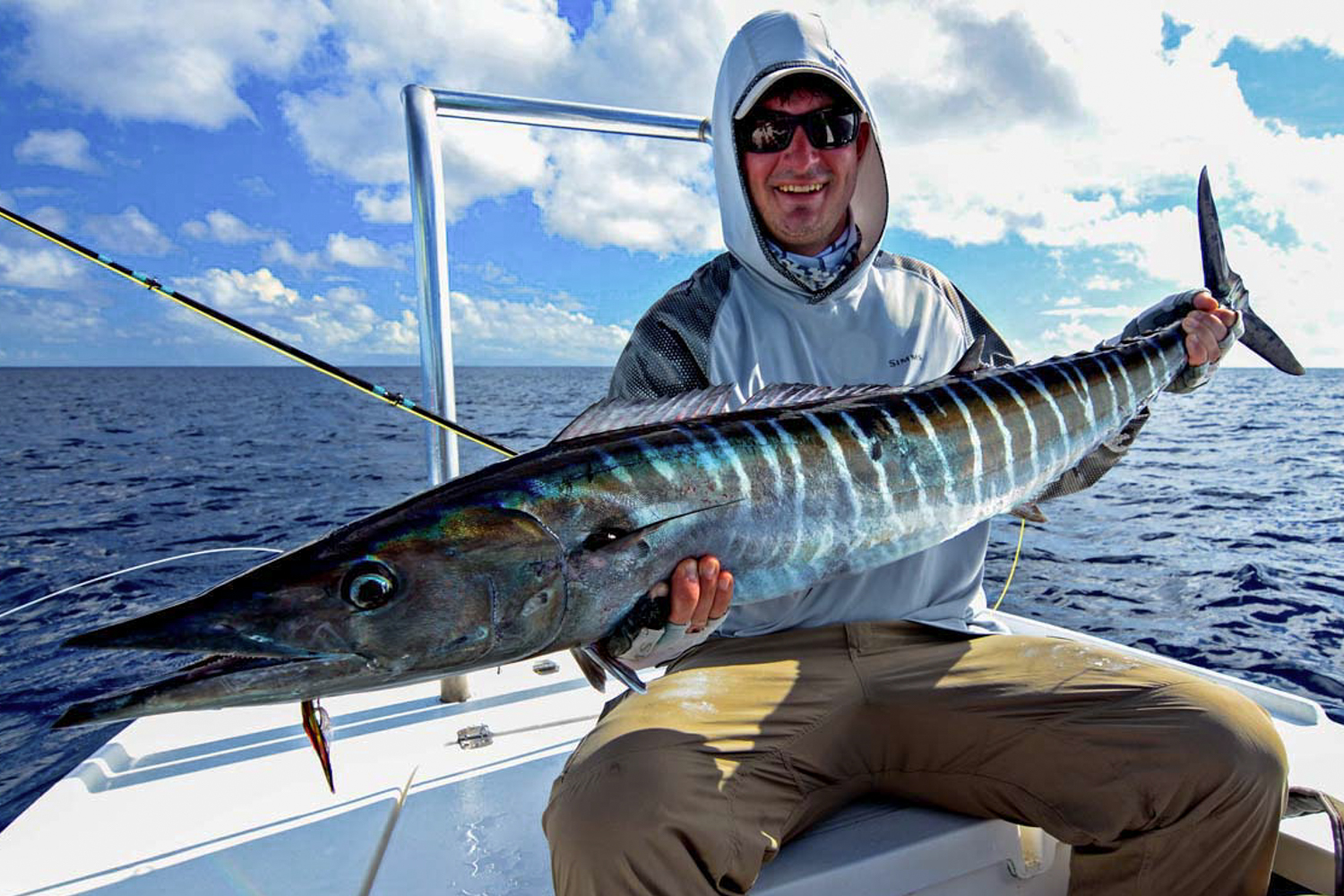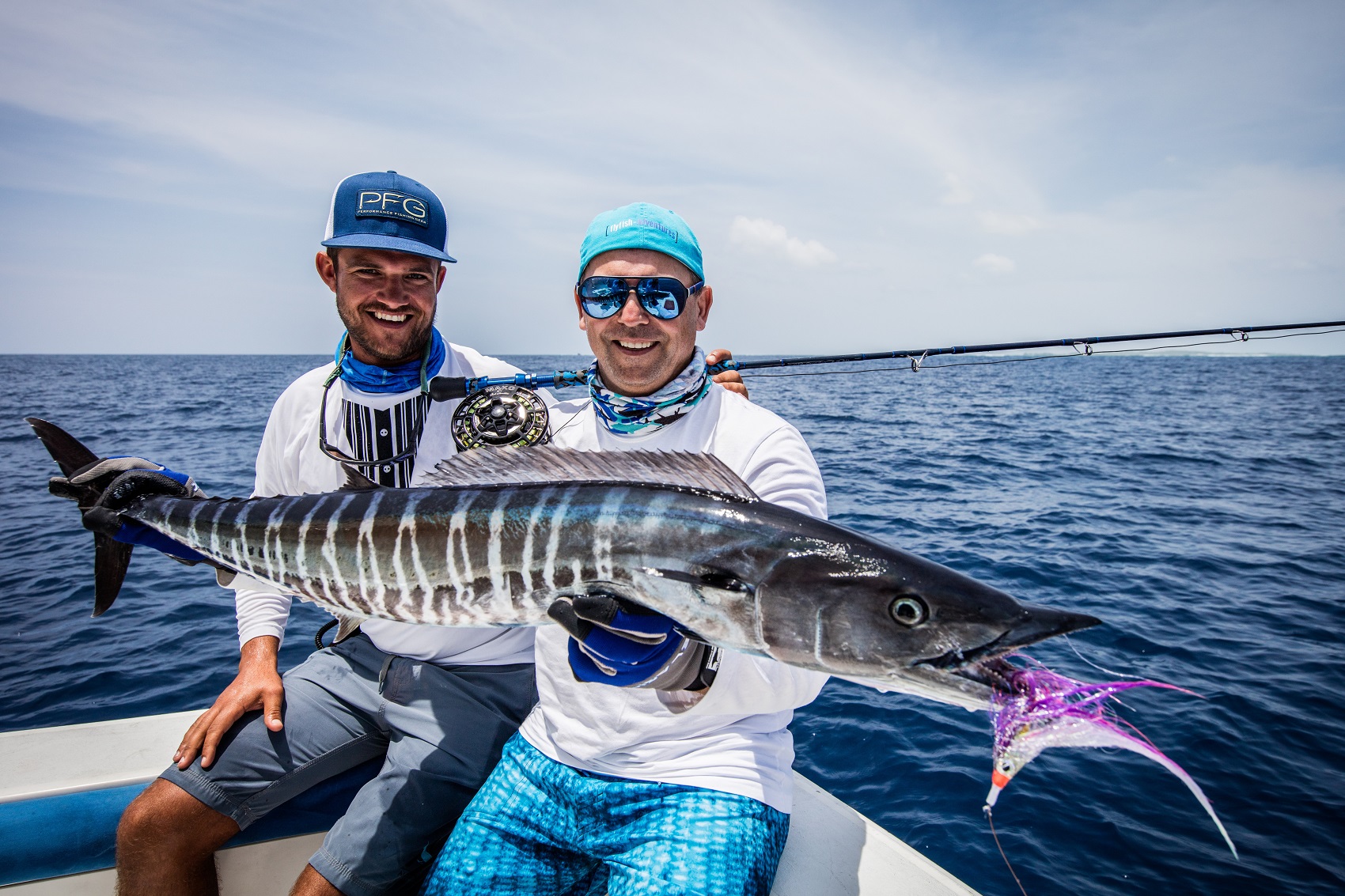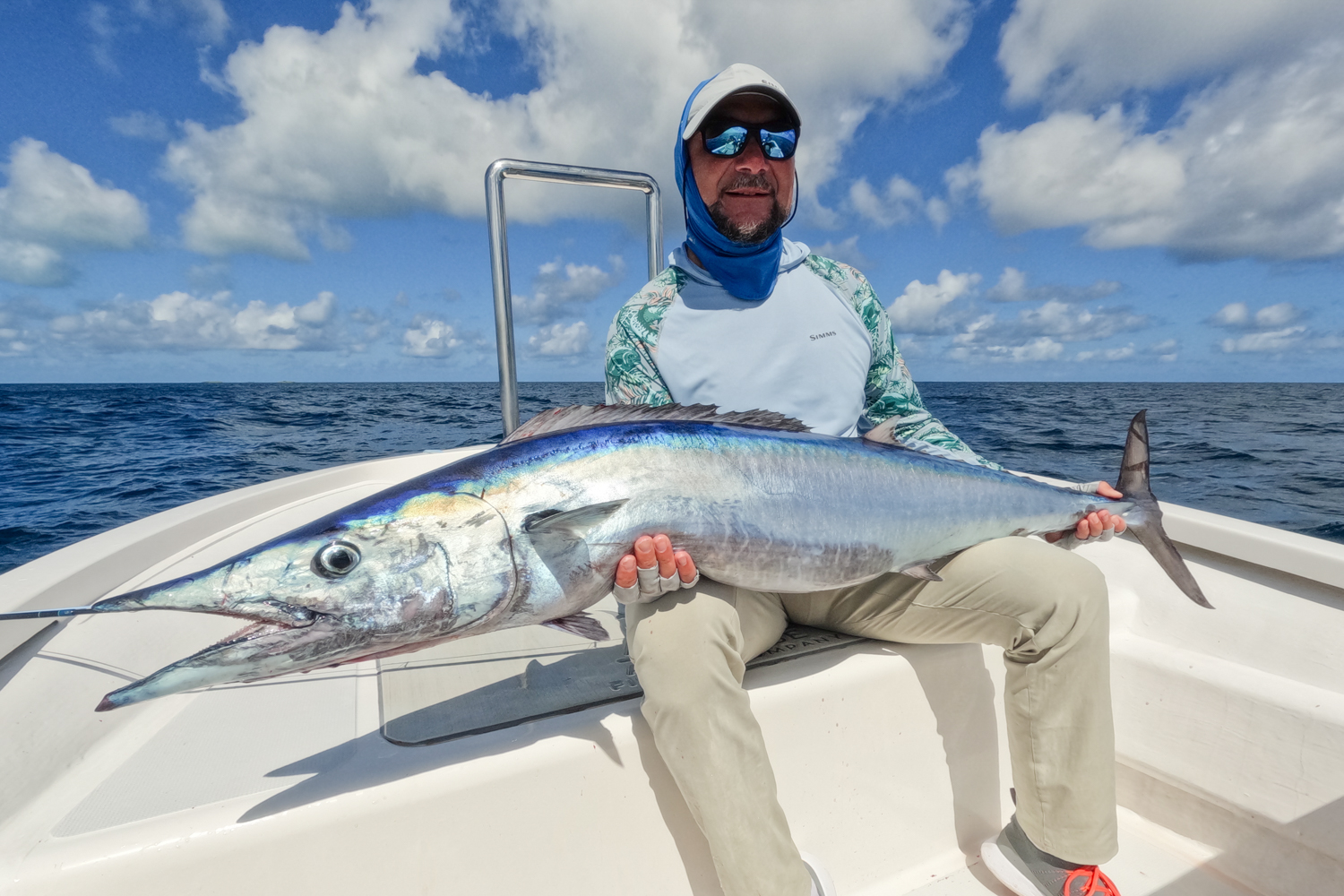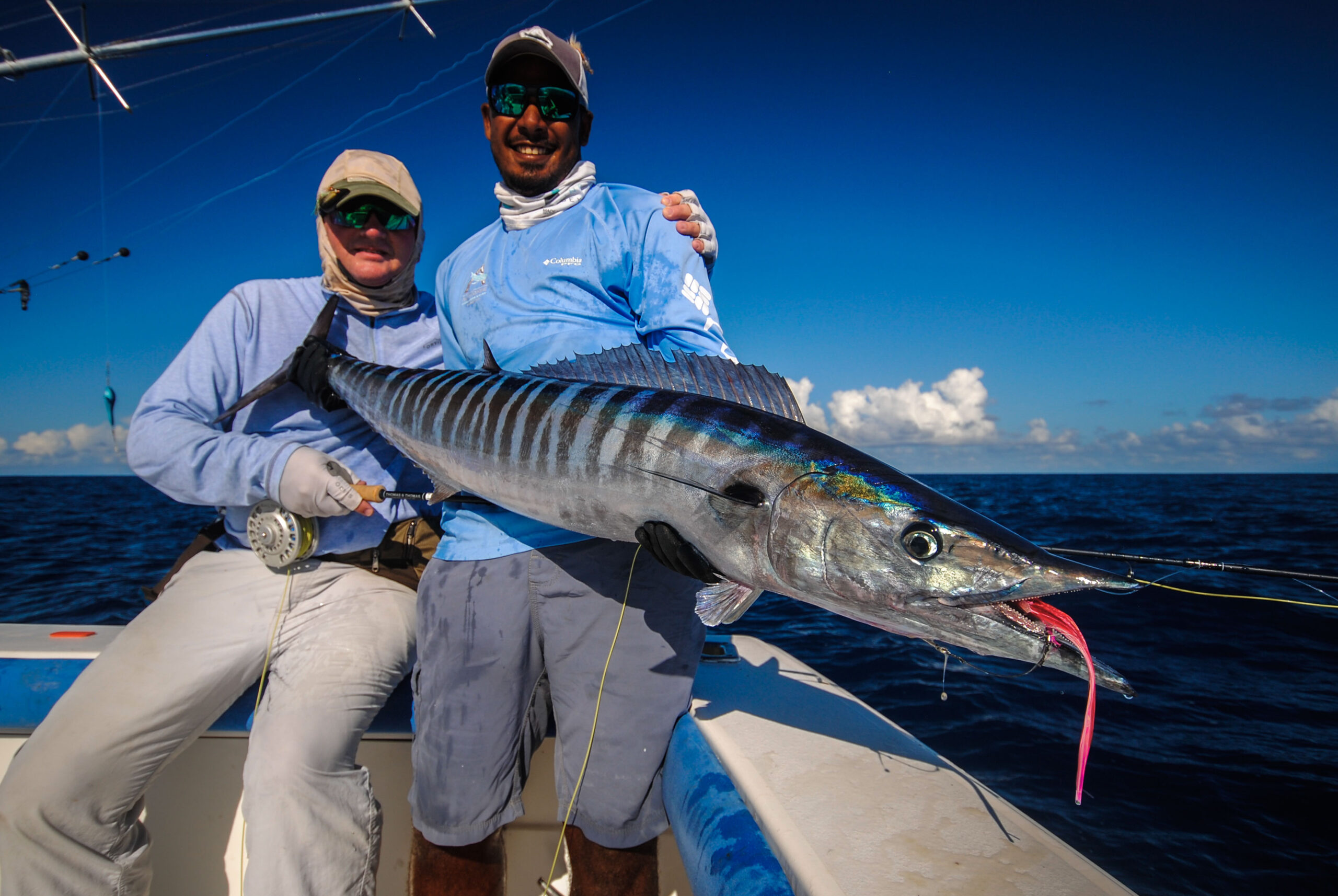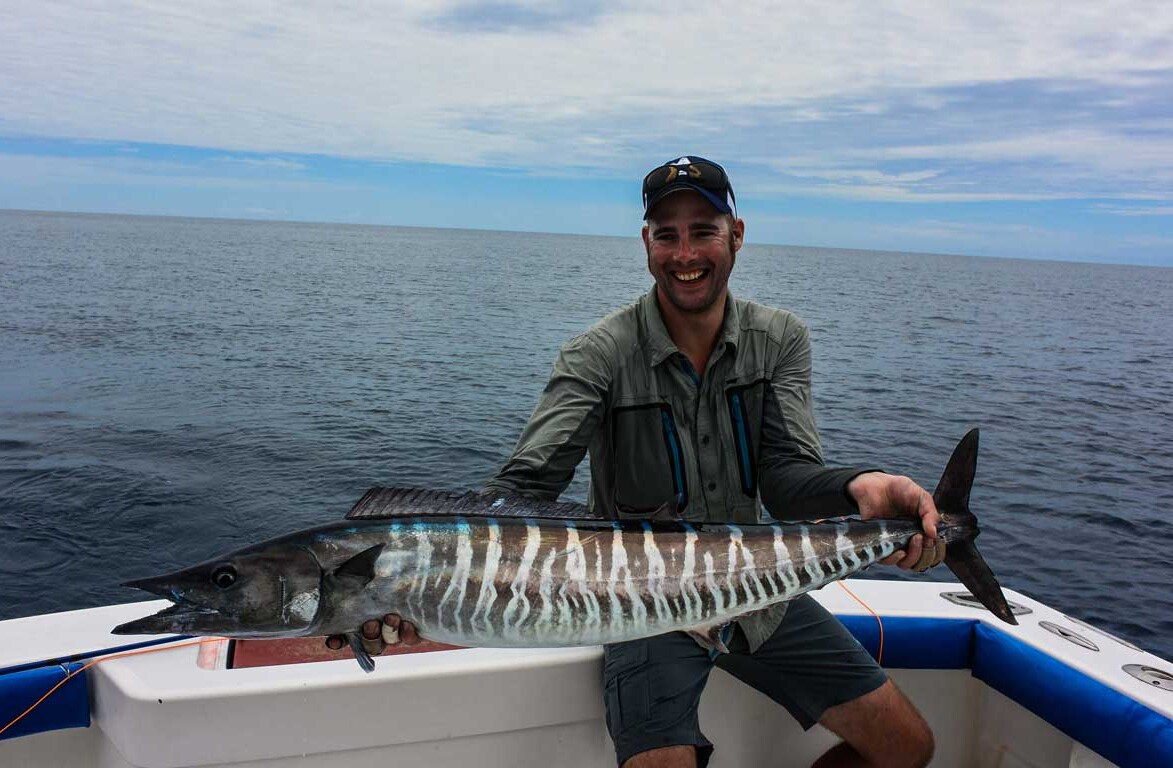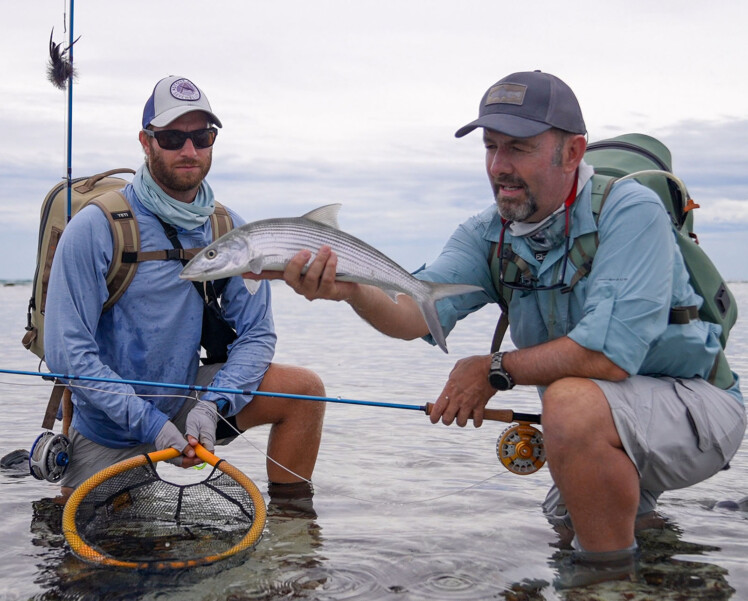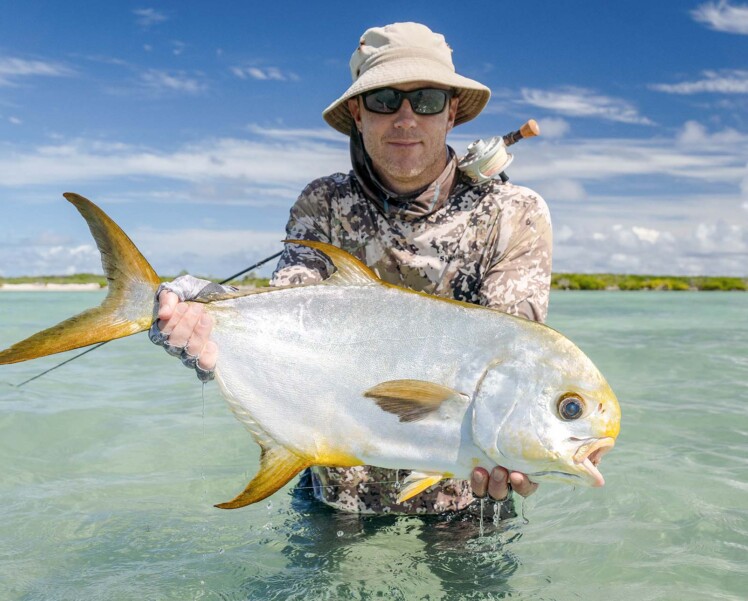Wahoo are teased up to the boat in the same way that one would tease up a sailfish. The popping head on the fly serves as a noise maker and creates a long bubble trail when stripped correctly, giving the fly a bigger silhouette in the water. Wahoo aren’t afraid of big flies.
Wahoo are great fighters when hooked on fly; they make very fast, long runs across the surface of the water and will normally remain on the surface for most of the fight. The rods we use for targeting wahoo are either a 10 weight or a 12 weight rod, but the preferred rod would be a 12 weight due to the fact that you never know the size of the wahoo that will eat your fly. Although wahoo normally fight close to the surface, the bigger fish will sound (go down deep) so a bit of a stalemate will ensue, and this is where the 12 weight rod becomes very effective with a strong backbone for pulling power and a lengthened fighting grip for leverage. This is enough to turn the fish’s head and bring him up from the depths. Due to the fact that AFC target wahoo on fly on a regular basis, we have a wide range of 10, 11 and 12 weight rods on offer.





